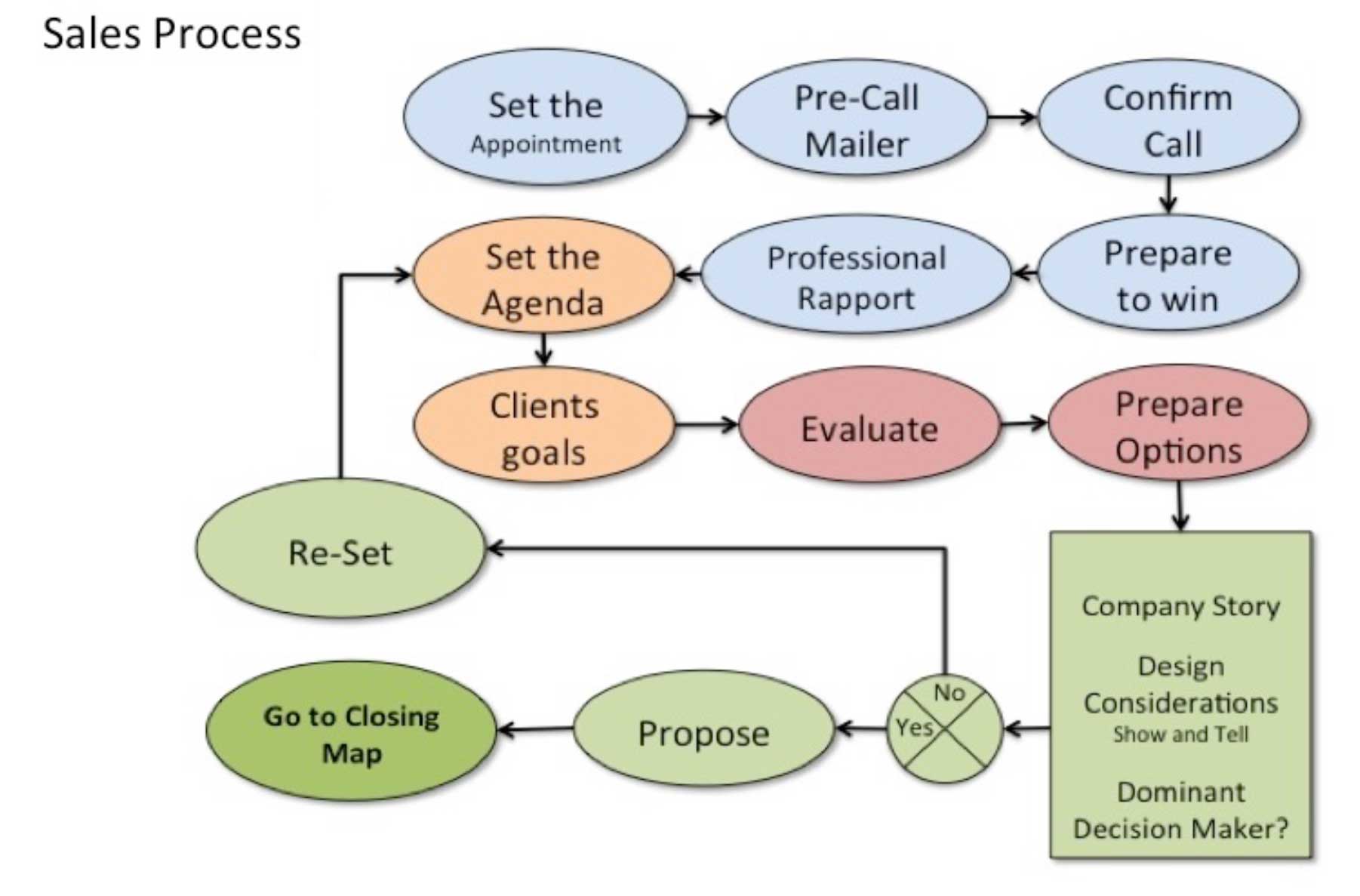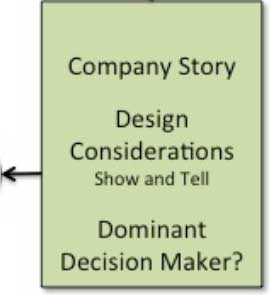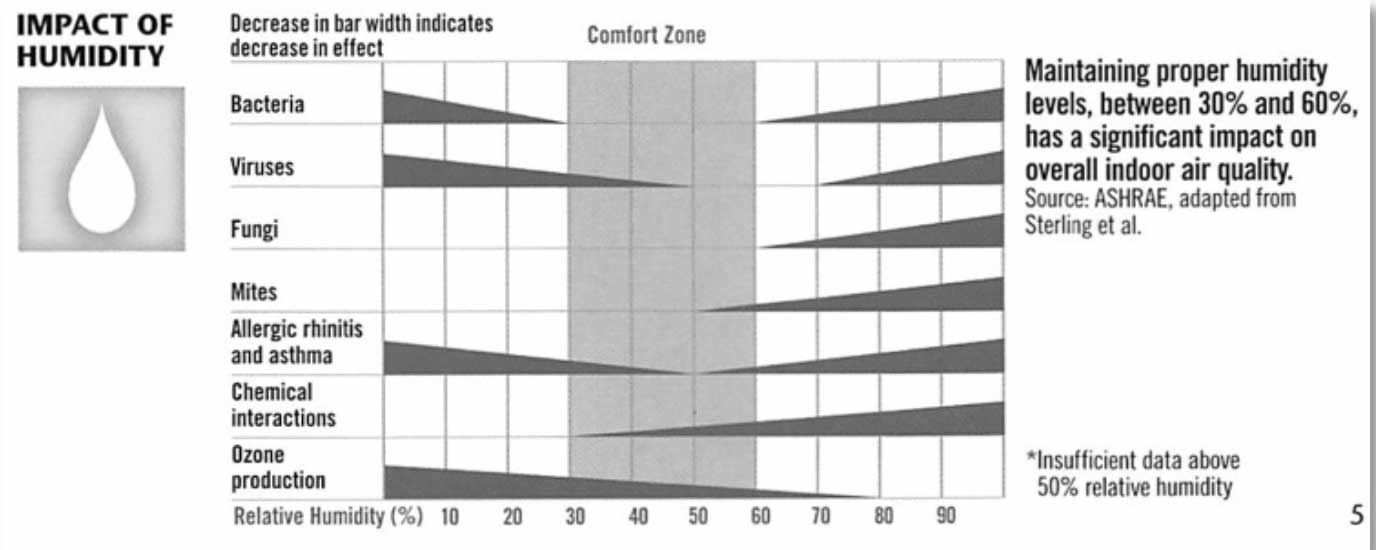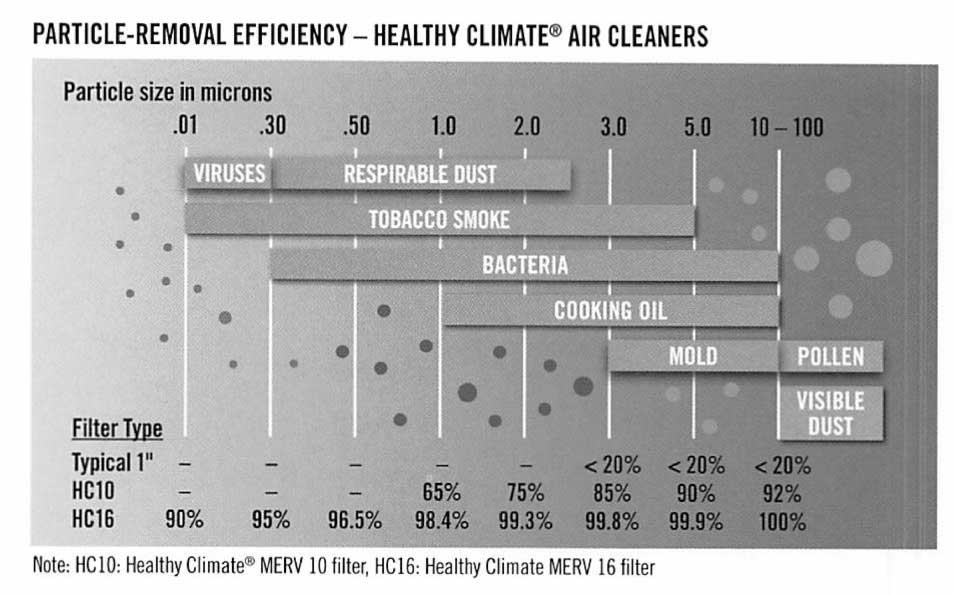Chapter 6
Credibility-Believability-Urgency
For Retail HVAC In-Home Comfort Advisors

By: Tom Wittman
HVAC Business Coach-Consultant-Speaker
(317) 750-1607
CoachTomw@Gmail.com
HVAC Coaching Corner
www.HVACCoachingCorner.com
Pro Comfort Advisor LLC
www.ProComHVAC.com
Step 5 Credibility, Believability and inspiring a sense of urgency
The objective of this part of the presentation is to:
- Inspire trust and confidence with your customer
- Clearly explain how you plan to accomplish everything on their list of goals
- Determine if this call is going to be a 1-step or 2-step call
Transition to the Company Story
“Great news, I’ve completed your evaluation and know what we need to do to take care of everything on your list of goals. Ok if we go to the table so I can review everything with you?”
The transitional statement followed by a leading question (On the way to the table)
“My customers told me a long time ago they simply could not afford it… not to have their work installed correctly the first time. And that’s why they appreciate the fact that we offer a 100% satisfaction guarantee that simply states, if for any reason you are unsatisfied with your installation, our employees, workmanship or the transaction within the first year of ownership we will do whatever it takes to make things right up to and including a 100% refund on your entire investment.” “We assume all of the risk so you don’t have to.” “How do you suppose we could offer something like that?”
The credibility of your employees
“It’s because of the quality of our people. We employ the best, most talented heating and air-conditioning design teams, replacement and installation specialists, service and maintenance specialists and comfort advisors in the state. “ “Can you believe we have to interview between 10 and 15 people just to find one that meets our minimum requirements?”
Employment criteria:
“Before we offer any person a position with our company, we perform a criminal history back round check to make certain they have a clear criminal record, we perform a driving history record to make sure that they have a responsible track record of safe driving and are insurable, we perform a drug screening on them as we periodically do with all employees to influence a drug-free environment and we also administer a competency test specific to the position each person applies for. Sadly, 80% of people applying for a position within our company failed to pass those minimum requirements.” I’ve often wondered where that 80 % of people found employment.”
Training agenda
“All of the employees are required to participate in a minimum of 120 hours of continuing education and skill development specific to their role within the company to make certain that the entire team is proficient with all new technologies, systems, and processes necessary to improve our ability to deliver an exceptional customer experience.”
Licenses, insurance, and certificates
“ Are you aware that the city needs to be notified of your installation to make certain that the company doing the work is properly insured and licensed?”
“We take care of all of that for you. In fact, here is a copy of our license and liability insurance. I’ve heard so many stories of uninsured and licensed company’s installing systems improperly or damaging the home while dragging the heavy equipment in and out of homes. Most of those people were unaware that when they hire an uninsured or licensed contractor to do work on their property, all liability falls on the homeowner, not the company responsible for the damage or injury.”
“All of our Replacement specialists roll out floor runners, wrap all of the old equipment in plastic and bag all of the additional debris before anything is carried through home. “
Awards:
“These practices have earned our Company several awards with the: BBB, Good Housekeeping Seal of approval, Lennox Excellence awards”
Memberships and affiliates
“Our associations with Lions club, Chamber of Commerce, SERTOMA, Little League, and Several faith-based community service events throughout the year has given us the opportunity to support efforts to make our community better.”
Why you do what you do
“As for me, I enjoy discovering what and helping them solve problems. I’ve been in the business for ___ years, love it and couldn’t imagine doing anything else. Do you have any questions about me, my company or the way we do business?”
Follow up question:
“Do we sound like the type of company you would feel comfortable working with?”
Transition to the Design Consideration step:
“Let take a look at what I found with the condition of your installation.”

Transition to the Design considerations stories:
Review their list of goals:
“Let’s begin with what I found at your indoor unit, ok?”
“What does this look like on the bottom of your furnace?” while pointing to the rust in the photograph. They will say “Rust?” you say “that’s right. What’s happening is:”

“Moisture from the concrete wicks up through the insulation on the inside of the blower compartment and causes the metal cabinet to rust out.”
“Mold and mildew grow in dark damp places just like the inside of the blower compartment (take photograph to illustrate) what does that look like?”…”Right.”
“When the blower turns on, where does that go? (Let the customer answer the question then reply) that’s right. It gets distributed throughout your home. Could this be contributing to your allergy symptoms, dust, and odors?”
“When we install your system, we will set the indoor unit on a plastic pad that will serve as a moisture barrier to prevent this from happening. Can you see how that will reduce allergy triggers, dust, and odors in your home?”
Restricted return airdrop (Return duct drop too small):
“The heating and air-conditioning blower pull air from the house through return air grills, into the return air ductwork, then it enters the return airdrop which connects the ductwork to the blower compartment. If any part of that return system, the grills, the ductwork or the return airdrop is too small, your heating and airconditioning system will have to work harder to circulate enough air to keep your home comfortable. Improperly sized ductwork causes increased operating costs, excessive dust, longer run times, reduce heating and cooling capacity and uneven temperatures in the home.”
Let me give you an example:
“Imagine trying to breathe through a coffee stirrer straw. You have to agree that would be a very difficult task right? That is how hard your blower has to work when the ductwork is too small. Can you see how that is creating some of the problems you are experiencing?”
Now imagine breathing through a big gulp straw. That would be much easier and much more comfortable wouldn’t it?” You would have to agree that properly sizing the return drop will help your new system perform much better than if the duct design were left the way it is, right?”
“When we install the proper signs return air ductwork to your new furnace, your system will be quieter, filter the air better, maintain better temperature throughout your home and cost less to operate. Does that make sense?”
Leaking ducts in unconditioned attic space:
I found several leaks in the ductwork as you can see by these photographs. There are 15 to 20 holes just like these. Each hole represents about 1% of the air that is being pulled from your attic. So, if we add up all of the 15 holes I found, what percentage of the air is being distributed into your home from your attic? What temperature is your attic in the summer?…and in the winter? Right.
Can you see how much harder your system has to work to keep your home comfortable if 15% of the air it is heating or cooling is coming from the attic? Not to mention the additional cost of operation. What else is in your attic? What kind of insulation is this? Right.
The ductwork is also pulling insulation, dirt, dust, and allergens from the attic area, into your filter. Now, (hold up the air filter) we can literally see through this filter. In fact, if we poured salt on this filter, the salt would fall right through, right?
Can you imagine how much of the dust, insulation particles and allergen particles have been blowing through your filter and distributed through your home?
To make matters worse, 15 to 20% of the conditioned air that should be going into your home is being lost into your attic because of the leaks on the supply ductwork. That reduces the capacity of your furnace and air conditioner by 15 to 20% which makes it difficult to maintain even temperatures and may cause the home to uncomfortable in extreme temperatures.
Can you see how sealing and insulating the ductwork and Installing a hospital-grade air filter along with an airtight filter cabinet will: Reduce allergy triggers, Minimize dust, Help even out hot and cold spots and reduce operating cost?

Chapter 1 Dominant decision-maker.
If you aren’t speaking to the dominant decision-maker, the likelihood of closing the sale isn’t as great as if you were speaking to the dominant decision-maker. Let’s review a few key areas of the sales process that deal with flushing out the dominant decision-maker before we get into the closing road map.
After the Design Considerations step, before you review any pricing options; determine if you are speaking to the dominant decision-maker by asking:
“ Does everything make sense? Can you see how what we are proposing will help you accomplish all of your goals?” Then ask:
“Before we design your new system and arrive at the price, should we check with (another person of interest) to make sure we don’t miss anything that might be important to them?”
Let the customer qualify him or herself. The answer to that question will tell you whether you should move forward with reviewing the price or re-set another appointment with the dominant decision-maker present.

How to re-set:
If the customer says yes, we probably should check with (person of interest), Reply: “It would be my pleasure to drop by and review everything with both of you just to make sure we don’t miss anything. When’s the next available date and time you and (person of interest) would be available?”
If the customer says: “No, let’s go ahead and review the options”:
- Follow the “Propose” process
- Help them make decisions that are in their best interest
Chapter 2 Reviewing system options and Asking For The Order:
“Ok, let’s review your equipment options.”
Whether you use an electronic format or manual format, put everything on the table in front of your customer and give them the opportunity to study all of the information while you explain what makes up the price. Your customer should be “studying” this information:

Your customer will either say, “Yes” or tell you that they would rather look at one of the other three options. More often than not, they will likely want to hear about the Best. Once they hear what the Best can do for them, every other option will be weighed against what they will be giving up by not selecting the best.
The next step is simply to review the features of the system they’re interested in and make the connection between the features and their list of goals.
Example:
“ This is the system that will do the best job for you. As you can see, it has a variable capacity air-conditioning, modulating heat and variable airflow.”
Variable airflow helps minimize temperature swings by gradually increasing the airflow on a call for heating or cooling instead of forcing air out of your vents at full speed before your system had a chance to condition it. You can also set the blower to circulate the air at a very low speed during the off cycles which will maintain a more even temperature as well as clean and purify the air 24/7 instead of limiting healthy air circulation, cleaning and purifying to a call for heating or cooling.
A properly sized air conditioner will maintain a (insert your number here) 72-degree indoor temperature at a (insert your number here) 100-degree outdoor temperature. Your home requires 3 tons of cooling.
Air conditioners fall under three classifications: single-stage, two-stage, and variable stage.
What percentage of the days your air conditioner operated last year was close 100 degrees outside?
Right… On average, 20% to 30% of the time. In fact, the median summer temperature in our area is 80 degrees. On a humid 80 degree summer day, your three-ton air conditioner cycles on cools the house quickly because it is designed to handle a 100-degree day, resulting in poor humidity control and higher operating cost. Have you ever experiences an 80-degree day where the temperature is satisfied but it still feels humid and uncomfortable? That’s why.
A variable speed air conditioner has 66 stages of cooling, paired with a variable airflow blower. This system will match the proper capacity (speed) of the air conditioner and airflow to the outdoor conditions. Once the temperature in the home is satisfied, it will check the relative humidity and shift to a dehumidification cycle to maintain a more comfortable and healthy humidity level in the home, delivering clean, crisp and fresh air. And by the way, this is the quietest, most efficient system in its class available today.
A properly sized furnace will maintain a (insert your number here) 68-degree indoor temperature at a (insert your number here) -10-degree outdoor temperature. Your home requires 90.000 BTU’s of heating. Gas furnaces fall under three classifications: single-stage, two-stage, and variable stage.
What percentage of the days your furnace operated last year was close -10 degrees outside? Right… On average, 20% to 30% of the time. In fact, the median winter temperature in our area is 25 degrees. On a cool 25 degree winter day, your 90,000 BTU furnace cycles on, heats the house up quickly because it is designed to handle a -10 degree day, resulting in dry, drafty air and higher operating cost.
A variable speed furnace has 66 stages of heating, paired with a variable airflow blower. This system will match the proper capacity (speed) of the furnace and airflow to the outdoor conditions. Once the temperature in the home is satisfied, them, it can (optional) shift to an air circulation cycle to maintain a more comfortable and healthy humidity level in the home, when paired with a whole-house humidifier and health care grade air filter, delivering clean, crisp and fresh air. And by the way, this is the quietest, most efficient system in its class available today.
As you can see,

Managing the relative in your home between 35% and 55% will not only reduce odors, but it will also reduce allergy and asthma triggers and reduce the spread of bacteria and Viruses.
Reducing allergy triggers was a top priority for you right?
Mold is an allergen. Mold (Fungi) produces allergens when it grows. When mold stops growing, it stops producing allergens. Mold (Fungi) stops growing when the relative humidity is below 50%. Above 50% it produces allergens. Below 50% it does not.
Have you ever heard of a dust mite?
Dust mites are microscopic bugs that feed on pet dander, hair, and skin. Fecal matter secretion from dust mites triggers allergies. Dust mites hydrate themselves by absorbing moisture from the humidity in the air. If the relative humidity falls below 50%, dust mites cant hydrate and they die.
Bacteria, Viruses and Asthma symptoms flourish when the relative humidity is below 35% in the winter (Dry) and above 60% in the summer (humid). When we control and regulate the relative humidity in the home between 50% in the summer months and above 35% in the winter, Allergy triggers, asthma triggers, and odors are reduced.
Can you see how designing a system that can control and regulate the humidity in your home will make your home healthier and more comfortable?
Now, to finish the job, we will incorporate a Health grade air filter:

I’ve selected the 16 MERV super filter because, as you can see, It performs better than other filters in its class.
“Can you see how this system along with the additional work will accomplish everything on your list of goals?” “Does everything make sense?”
At this point, your customer will do one of three things:
- Have an emotional reaction to the price.
- Ask if they can see another less expensive option.
- Say YES everything makes sense.
Let’s review how to handle each one before we Ask For The Order.
1. An Emotional reaction to the price:
“This is way more than I was wanting to pay”. Right now, your customer is feeling out of control of the situation. Your job is to keep them in control of buying. This is how to put them back in control:
“I understand, the price is based upon the system size, the type of system you choose and how much of the additional work makes sense for you to do right now.” How far out of range is the price?”
Wait for the answer…
“Ok, If we are able to arrive at a price that you are comfortable with by revisiting the equipment selection and additional work… Would there be any reason no to schedule the work?”
If they say No… work them through a re-design until they are comfortable moving forward.
If they indicate any “other reasons” for not scheduling the work, follow the appropriate approach covered in the process following this section.
2. They want to see another less expensive option.
Ask them which one they would like to take a closer look at and walk them through an explanation.
3. They say YES everything makes sense
Assume the Sale and Ask for the Order

